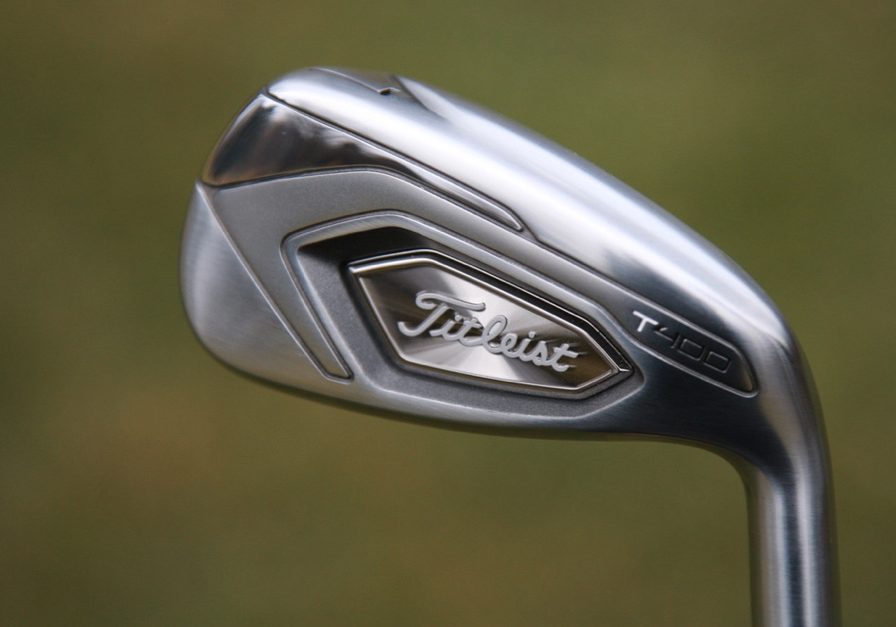
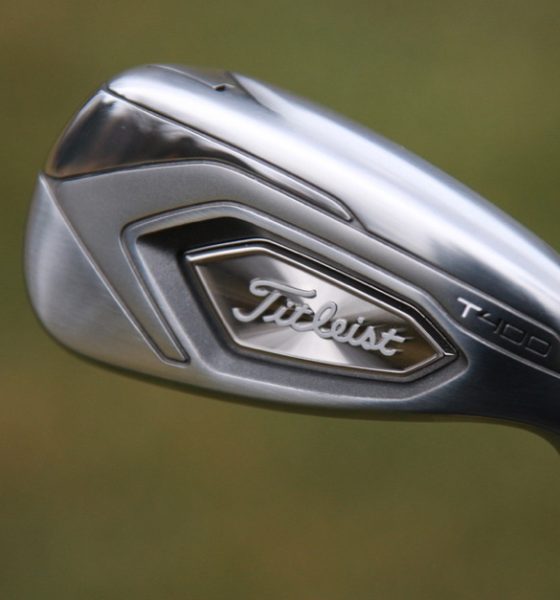
Equipment
Titleist T400 irons: Pure Titleist, pure distance
Let’s be very clear from the start, the new Titleist T400 irons are built for one thing and one thing only: distance-driven performance.
The T400 occupy the fifth and final spot in the T-Series iron lineup—alongside the T300, T200, T100 and T100-S—and specifically target golfers with moderate swing speeds seeking greater height, distance, and forgiveness—all while still being distinctly Titleist.
2020 Titleist T400 irons: What’s inside and out
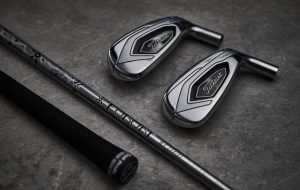
From sole to grip, the T400’s have been designed to maximize distance by any means necessary. Working from the sole up, the first thing you will notice is how wide the iron is from the leading to the trailing edge. This wide-body head shape pushes the center of gravity low and as far back as possible to boost forgiveness and increase launch.
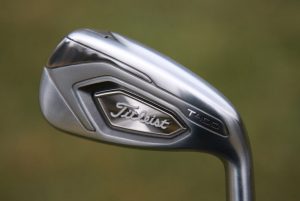
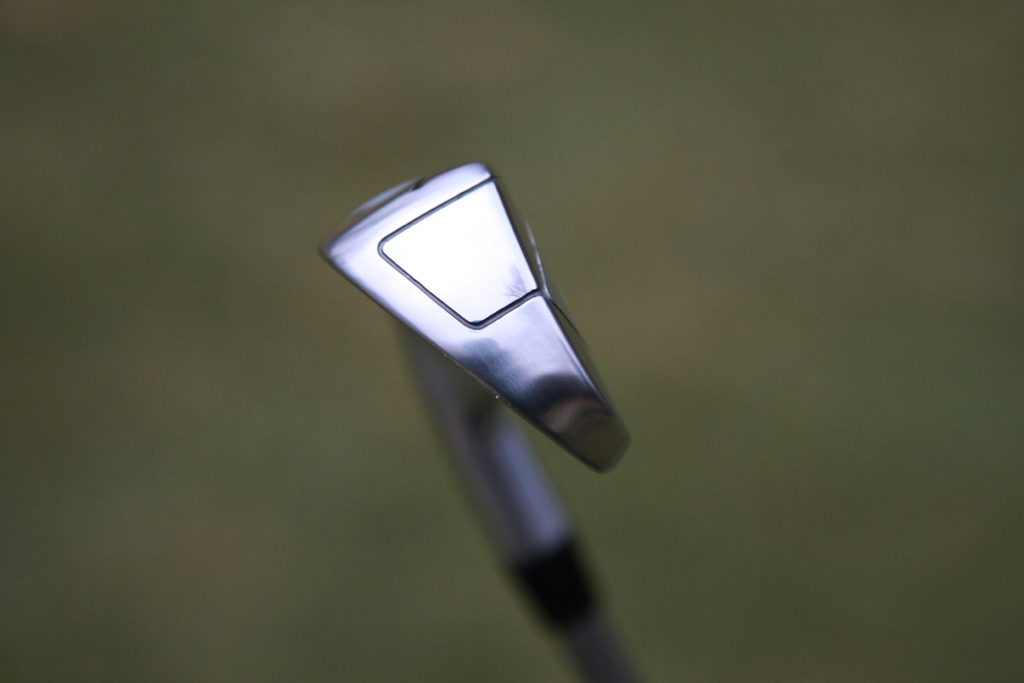
To help eliminate any turf interaction issue that might come from this wide-body shape, Titleist employed a split sole design to elevate the last third of the sole and stops the club from bouncing into the ball and producing lower face strikes on firmer turf. With this design, the T400’s effectively play the same through the ground as the T300 but in a much more forgiving package.
You might recognize this sole design trait from another OEM since Cobra has used a similar sole shape in irons like the F9 and the new King Speed Zone. It’s no different than OEM’s using similar wedges grinds—since they all refine them differently—and it’s not a bad thing for the consumer either: it proves that both companies are onto something.

“Look, we already know what people are going to think when they see these loft specs, but they have to consider the target market and what we are trying to accomplish.” – To remain unnamed Titleist Employee
There is plenty of reason for the stronger lofts being part of the package beyond face technology and center of gravity placement. In fact, some of if even relies on psychology to help make the clubs easier to hit.
Before we get to the psychology part of the discussion, let’s get through the technological advantages the Titleist iron design team has brought to the T400 iron.
Hollow Multi-Material Head Construction: Hollow heads are not new, but as we have made clear over and over when talking about golf clubs, engineers only have so much mass to work with. Hollow multi-material heads produce an extremely high MOI (level of forgiveness) that maximizes ball speed on off-center strikes. It’s the difference between playing tennis with an old metal racket and making the jump to oversized carbon fiber. Bigger is better.
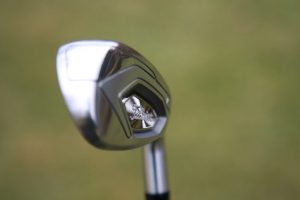
High-density Tungsten Weighting: Tungsten offers an extremely high-density mass-to-volume ratio that allows Titleist designers to push weight to the far reaches of the head to boost launch and fine-tune spin. This high-density weight positioning keeps the area behind the face of the iron open and unsupported to let it flex like a trampoline to increase ball speed.
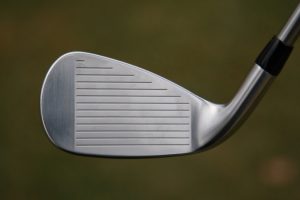
Forged SUP-10 L-Face Insert: You might recognize this face insert from another recently released Titleist product, the Titleist U500 and 510 utility irons. The forged high-strength steel “L-face insert” comes in at less than two millimeters thick and is built to flex and retain ball speed. The “L” face has variable thickness and wraps under the leading edge of the iron to save mass by removing welds in the area of the face. This creates the opportunity for more discretionary weight on the heel and toe for the tungsten mentioned earlier.
Since the longer irons are where retaining ball speed is key, the SUP-10 face insert is found in the 5-7 irons and transitions to offer a more traditional face insert. It’s like having a combo set made with all the technology of a compact hybrid—something a lot of golfers truly need.
Optimized Weight Platform: The stock shaft and grip offering were all selected to match the performance goals of the T400 heads and also produce very light total weights to help golfers gain clubhead speed. For any moderate speed player, the opportunity to gain clubhead speed is a big benefit.
For many older players (not to go down a philosophical rabbit hole, but this moment, reading this right now, is the youngest you will ever be for the rest of your life…) being able to get back that extra club of distance and hit it higher and land it softer makes the game more fun. And who doesn’t want to have more fun?
This brings us back to something I mentioned off the top: How can a club be psychologically easier to hit? Just like how single length clubs can give golfers the confidence to set up better, not putting the number 4 on the bottom of a club can also create the same effect… seriously! During the testing process with players, there was the idea to make the set numbering go from 4-iron to W49, and, in essence, make the pitching wedge the 43-degree club instead of the 38-degree but this came with a few challenges
- The lengths would have had to change and for slower speed players longer clubs off the turf can be more difficult to elevate.
- The mental hurdle of a 4-iron vs a 5-iron may seem silly, but as a famous golfer once said: “The hardest distance to tame in golf in the six inches between your ears.” Player testing over and over showed that even when specs were the same, golfers hit the 5-iron better than the 4-iron. You can put that in the “strange but true” file.
The Titleist T400 golfer
One of the first things a golf company does before creating new products is to evaluate its current lineup and look at how newer clubs help cater to specific wants and needs of certain players. That alone is part of how we developed the categories in our GolfWRX Best Irons in Golf survey: to cater to player attributes not handicaps.
“T400 is the super distance Titleist iron. This club is engineered to get the ball in the air and launch it as far as possible, even when the strike isn’t perfect,” Josh Talge, Vice President of Marketing, Titleist Golf Clubs.
“There are so many golfers, particularly players with moderate swing speeds, who can benefit from this technology. T400 gets the absolute most out of your swing while still providing the playability of a Titleist iron along with that look, sound and feel that dedicated players demand.”
Speaking to “the dedicated player,” the T400’s are progressive in blade length, hosel length, and overall shape from address to still allow for precision shots as a player gets closer to the green. Just because an iron is built for distance doesn’t mean you shouldn’t have the opportunity to hit controlled shots. This once again appeals across player profiles.
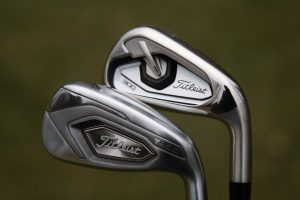
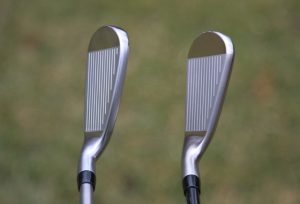
Left: T400, Right T300
The last part of this story is similar to other OEM’s, and that is Titleist’s desire to have a single brand/line of clubs across markets instead of segmenting based on geography. What do I mean by this? Japan and South Korea.
Japan and South Korea are the second and third largest golf markets in the world by dollars (Yen and Won) spent on equipment. It’s an impressive feat considering the number of active golfers is much fewer than other parts of the world, including Europe. The largest part of the audience is moderate swing speed players looking for more distance, and in a golf marketplace where non-conforming drivers are more widely accepted and used, the “loft jacking” conversation is a moot point—it’s all about hitting clubs further.
Shaft and grip specs
T400 offers premium lightweight graphite and steel aftermarket options to help the target moderate swing speed players maximize performance.
The stock shafts are
Graphite: Mitsubishi Fubuki MV IR: A mid to high launch shaft that comes in at 50g. MV stands for “Maximum Velocity” – since the profile encourages higher ball speed through its ultra-lightweight iron-specific graphite design.
Steel: True Temper AMT Red: The highest launching in the AMT family of True Temper steel shafts ascends 95-107g (3g per club) with lighter long iron shafts for increased launch and speed and heavier short iron shafts for control.
Along with the stock shafts, Titleist offers a bevy of custom shaft choices, with many at no up-charge.
T400’s 43-gram stock grip, the Golf Pride Tour Velvet 360 Lite+, weighs in nine grams lighter than
the T-Series stock Tour Velvet 360 model.
Pricing and availability
The Titleist T400 irons will be available in golf shops worldwide beginning March 27 with fittings tools making their way to fitters beginning March 6.
They are priced at $185.50 per club ($1,299/set of 7) for steel and $199.50 per club ($1,399 /set of 7) in graphite.
Another way to experience T400
Beginning February 27, golfers can experience the T400 irons for themselves by attending a Titleist Fitting and Trial event, being held at hundreds of locations nationwide.
- LIKE199
- LEGIT16
- WOW24
- LOL11
- IDHT4
- FLOP7
- OB5
- SHANK119
Whats in the Bag
Richy Werenski WITB 2024 (May)
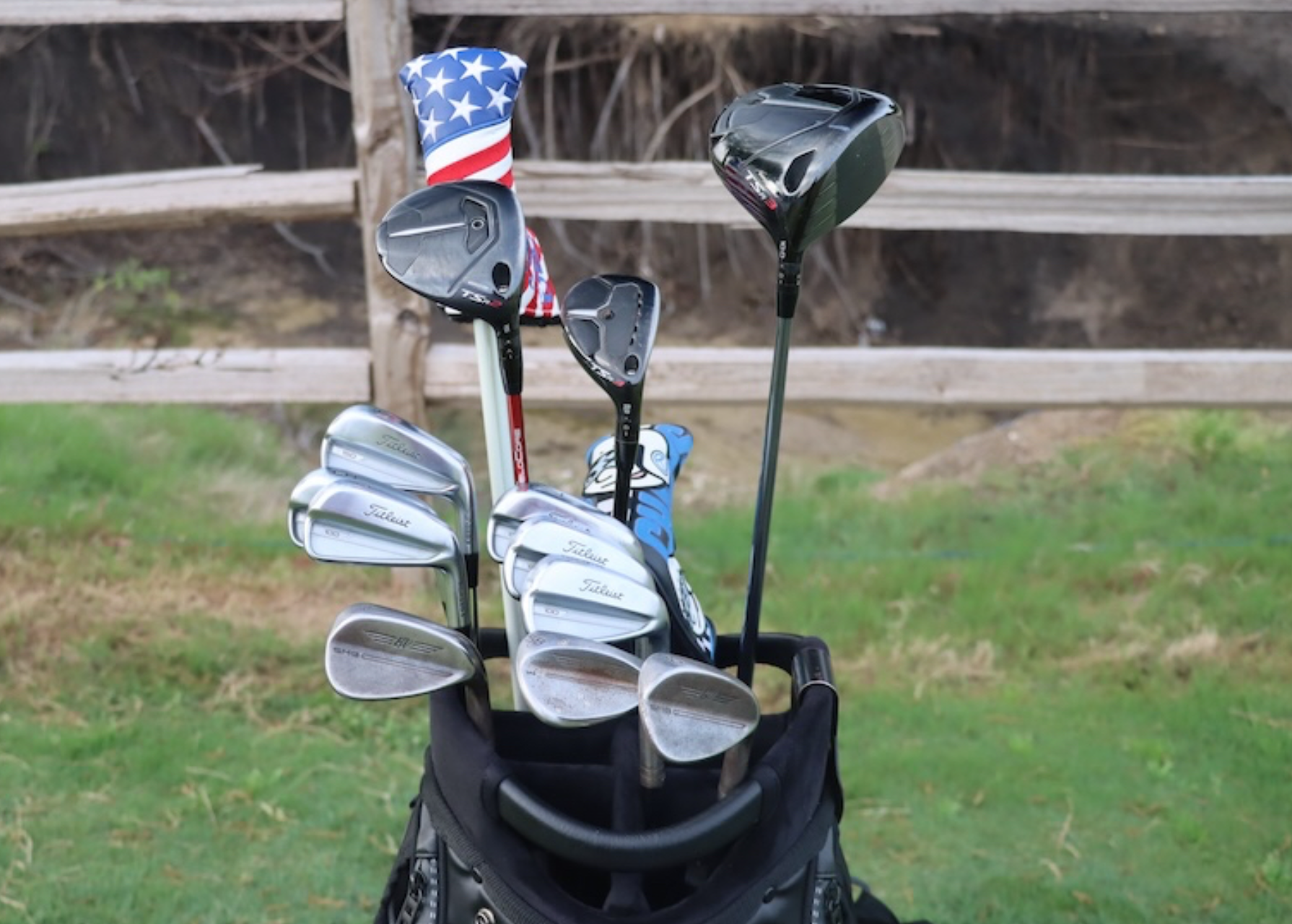
- Richy Werenski what’s in the bag accurate as of the CJ Cup Houston Open.
Driver: Titleist TSR3 (10 degrees, D1 SureFit setting)
Shaft: Mitsubishi Diamana PD 60 TX
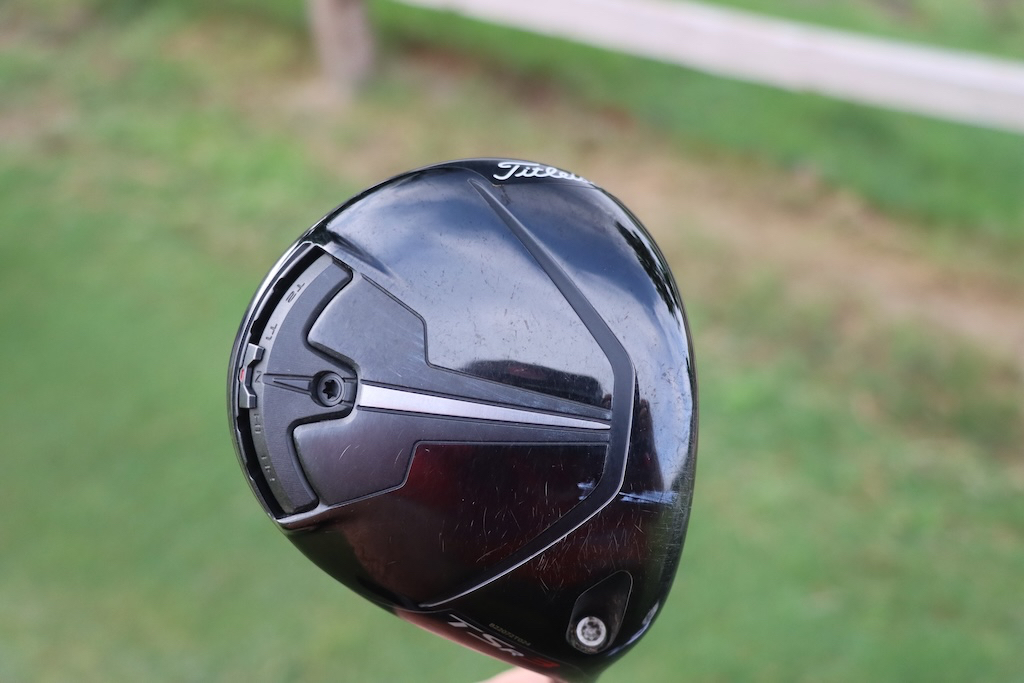
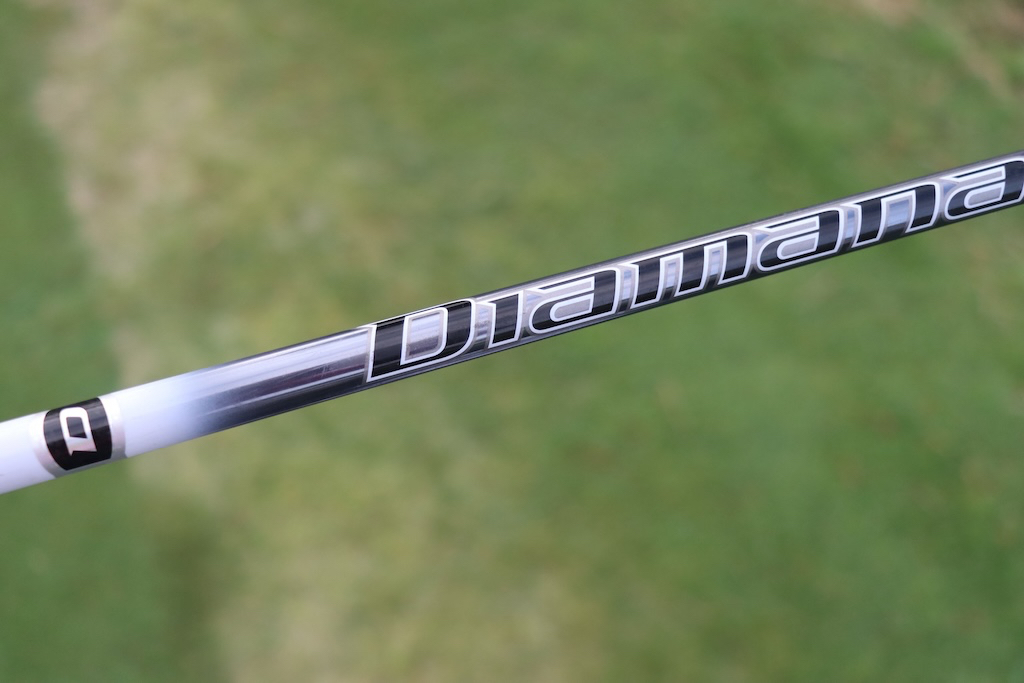
3-wood: Titleist TSR2 (15 degrees, A1 SureFit setting)
Shaft: Fujikura Ventus Red 8 X
Hybrid: Titleist TSR3 (19 degrees, D1 SureFit setting)
Shaft: Mitsubishi Tensei CK Pro White Hybrid 90 TX
Irons: Titleist T100 (4-9)
Shafts: Nippon N.S. Pro Modus3 Tour 105 S
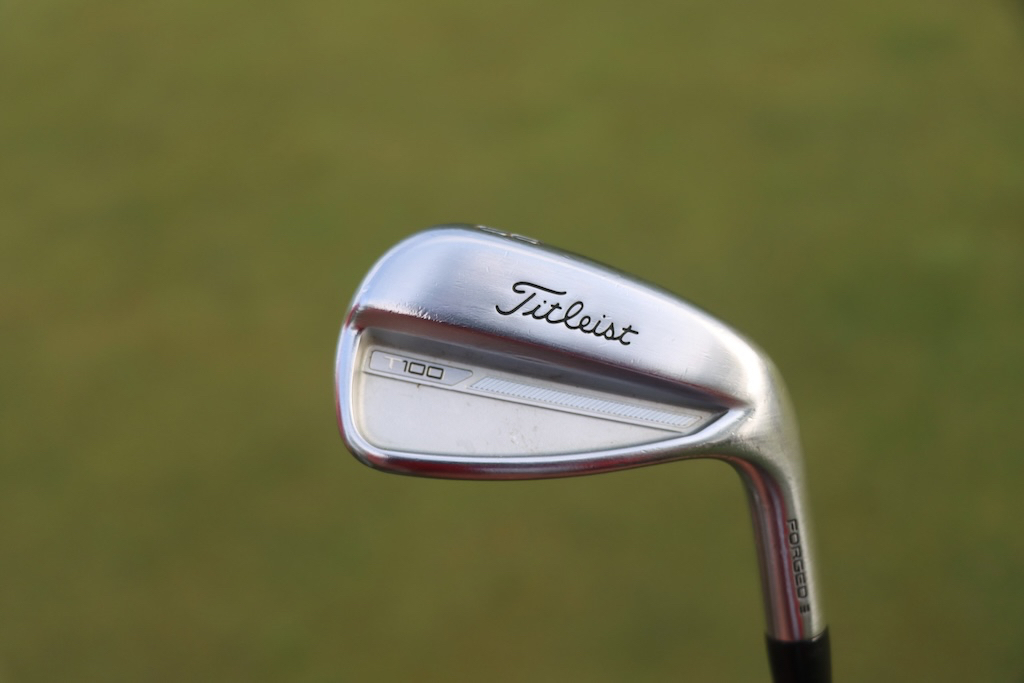
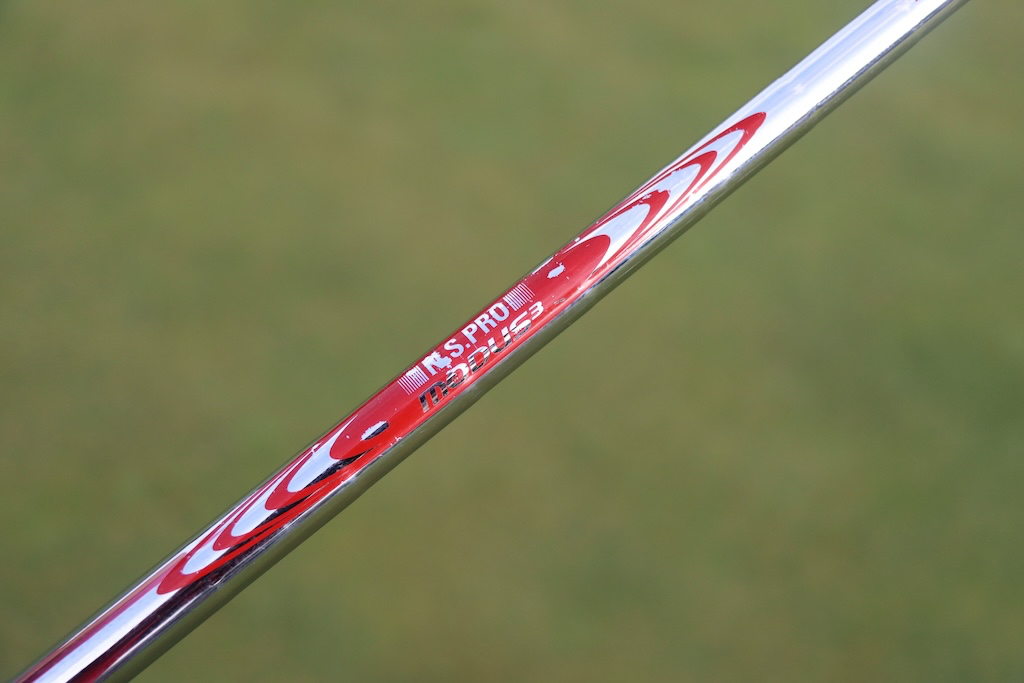
Wedges: Titleist Vokey Design SM9 (46-10F, 50-12F), Titleist Vokey Design WedgeWorks Proto (54-M, 58-L @60)
Shafts: True Temper Dynamic Gold Tour Issue X100 Onyx (46-50), True Temper Dynamic Gold Tour Issue S400 Onyx (54-60)
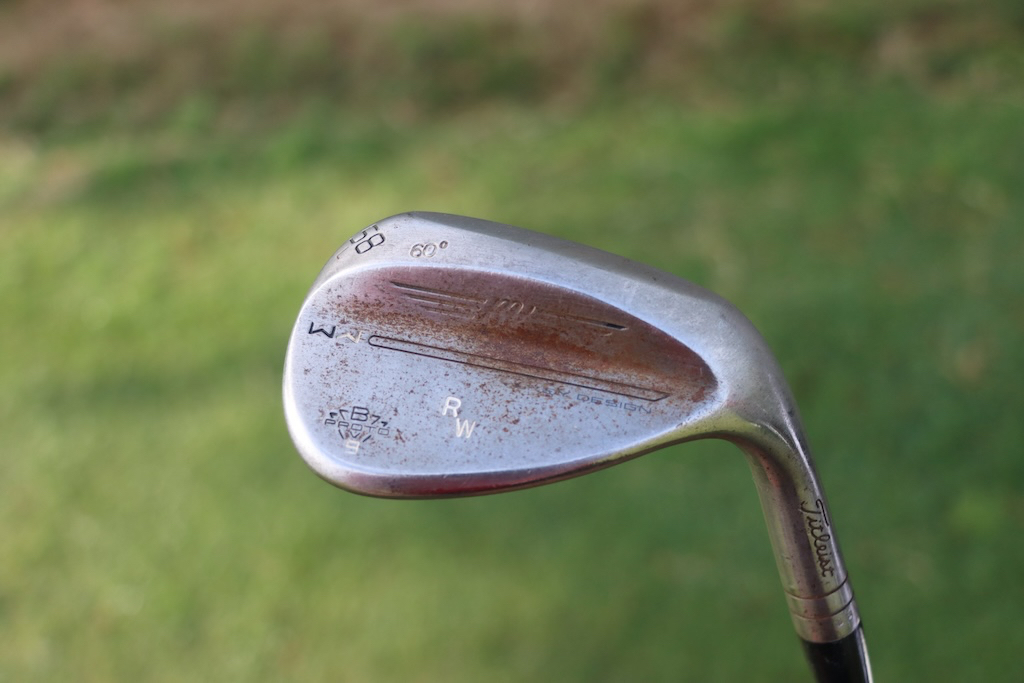
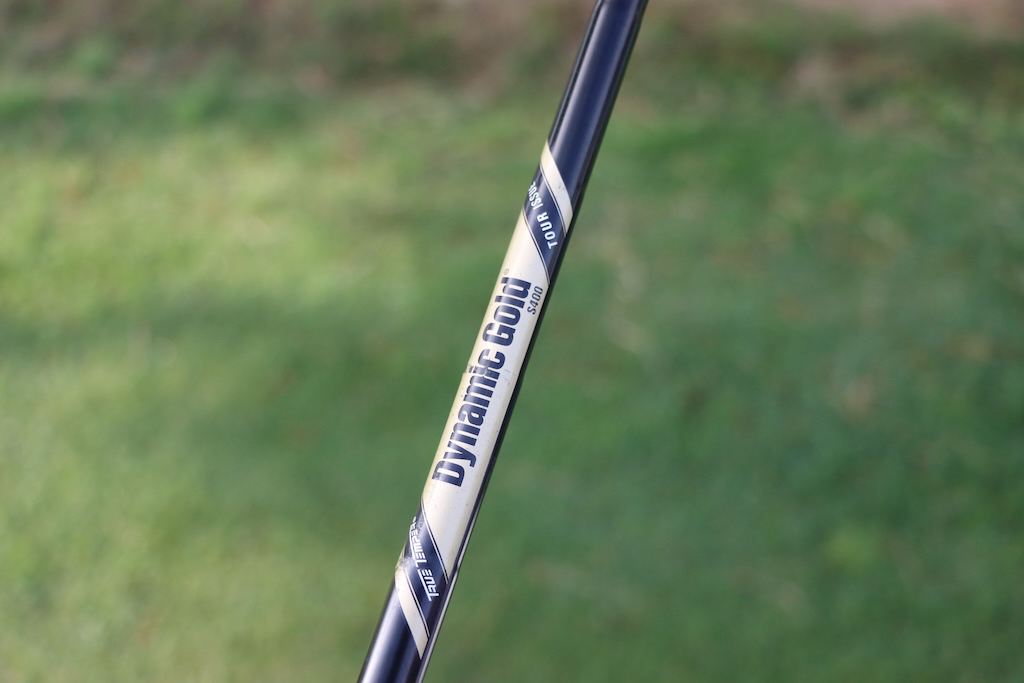
Putter: Scotty Cameron prototype
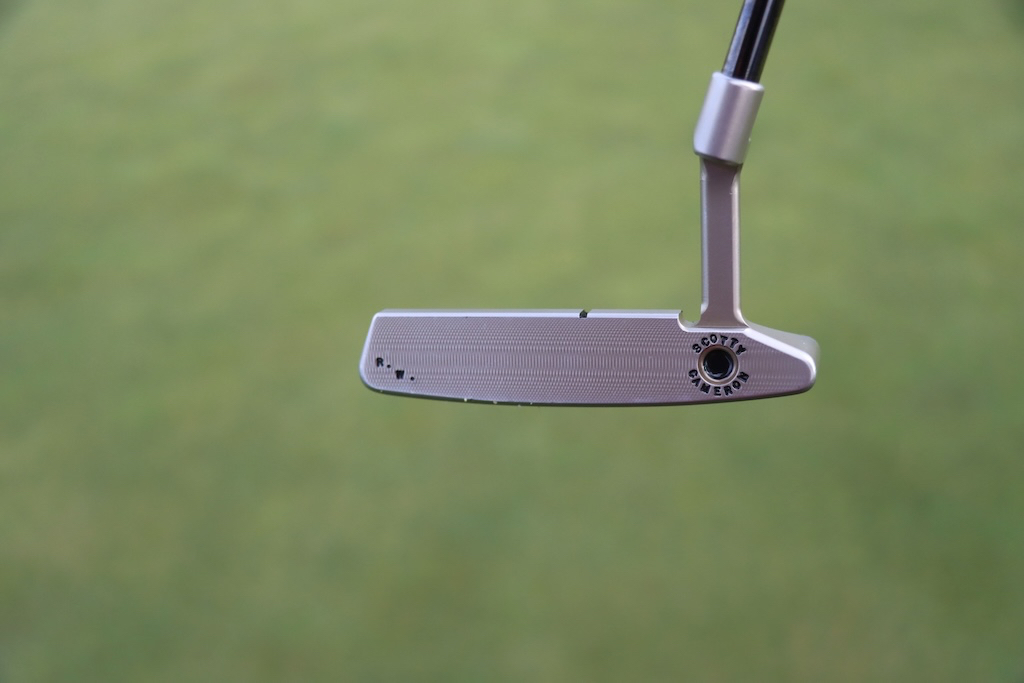
Ball: Titleist Pro V1x Left Dash
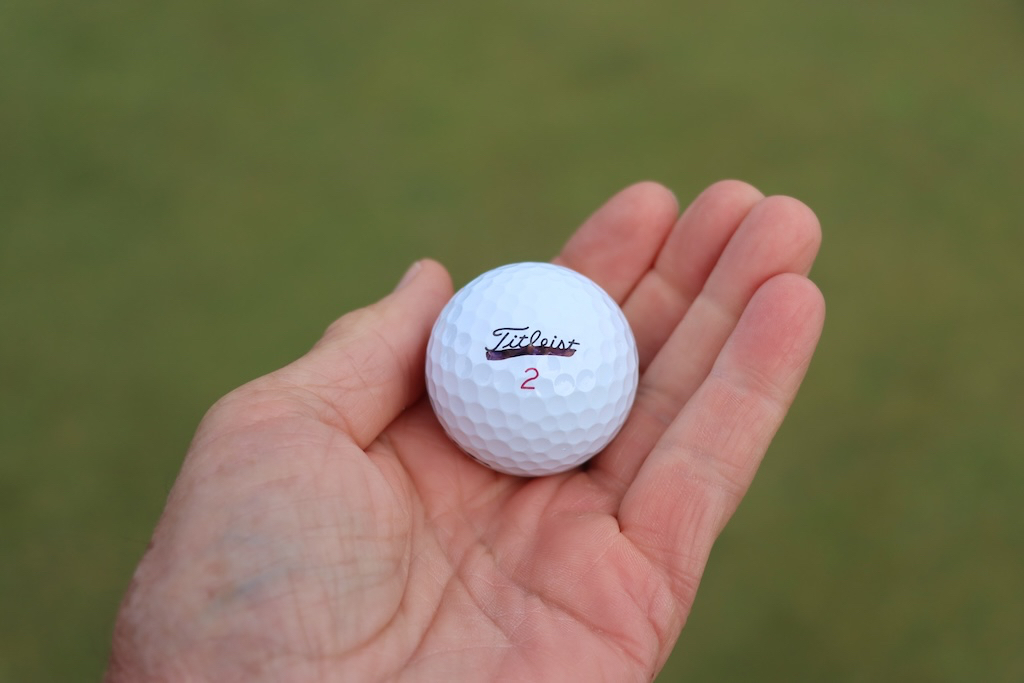
Grips: Golf Pride ZGrip Cord
Check out more in-hand photos of Richy Werenski’s clubs in the forums.
- LIKE1
- LEGIT0
- WOW0
- LOL0
- IDHT0
- FLOP0
- OB0
- SHANK0
Equipment
Adam Scott testing green “Masters Use Only” putter + 6 interesting equipment photos from the 2024 CJ Cup Byron Nelson
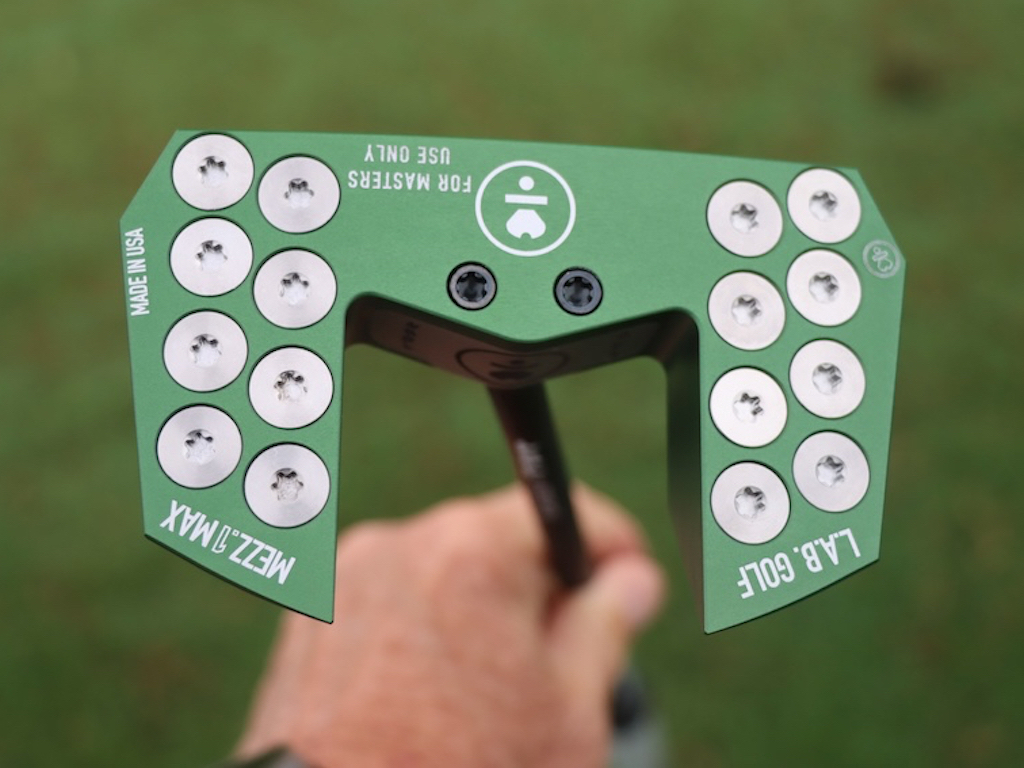
Welcome to the 2024 CJ Cup Byron Nelson event at TPC Craig Ranch in McKinney, Texas, which, for your geographical reference, is about 25 minutes from Dallas.
In early-week equipment news, we saw some interesting putter testing from Adam Scott, a Maxfli golf ball signing on the PGA Tour, a 16-year-old’s WITB, a PGA Tour player using another PGA Tour player’s backup putter, and Jordan Spieth weighed in on why he recently switched out just his 7-iron (and then made a hole-in-one with it).
With so much to report and so little time to waste on the intro, let’s get right into this week’s equipment rundown from the CJ Cup Byron Nelson.
See all of our photo galleries from the week here
Adam Scott’s new L.A.B. putters
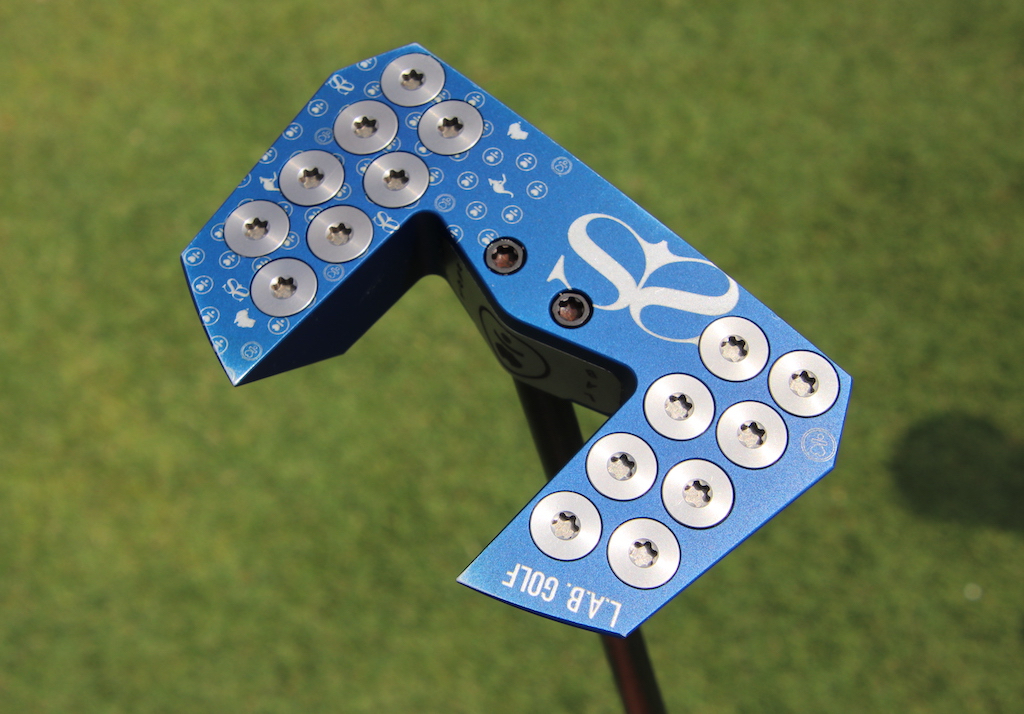
Before we get into a couple of the new prototypes Scott has been testing, above is a photo of the L.A.B. Golf Mezz.1 Max prototype putter that he’s been using, and will likely continue to use this week in Texas.
That being said, following the Masters, Scott was looking to try a couple putters with a slightly lighter weight to help with his feel on fast greens.
One of the new prototypes we spotted on Tuesday was a L.A.B. Golf DF3 “Proto 2.1”, custom-built with Scott’s preferred blue colorway, and an Australia-inspired Kangaroo laser engraving…
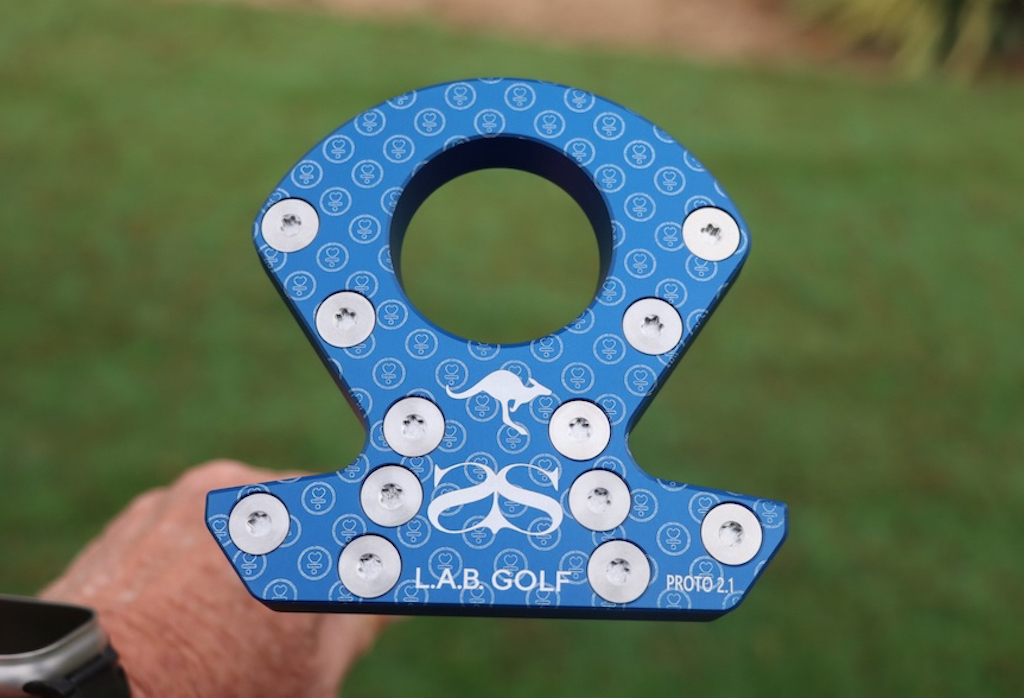
We also spotted him with a green-colored “For Masters Use Only” Mezz.1 Max prototype…

While it’s unlikely Scott will make a switch this week, it’s certainly something to keep an eye on going forward, especially on courses with faster greens.
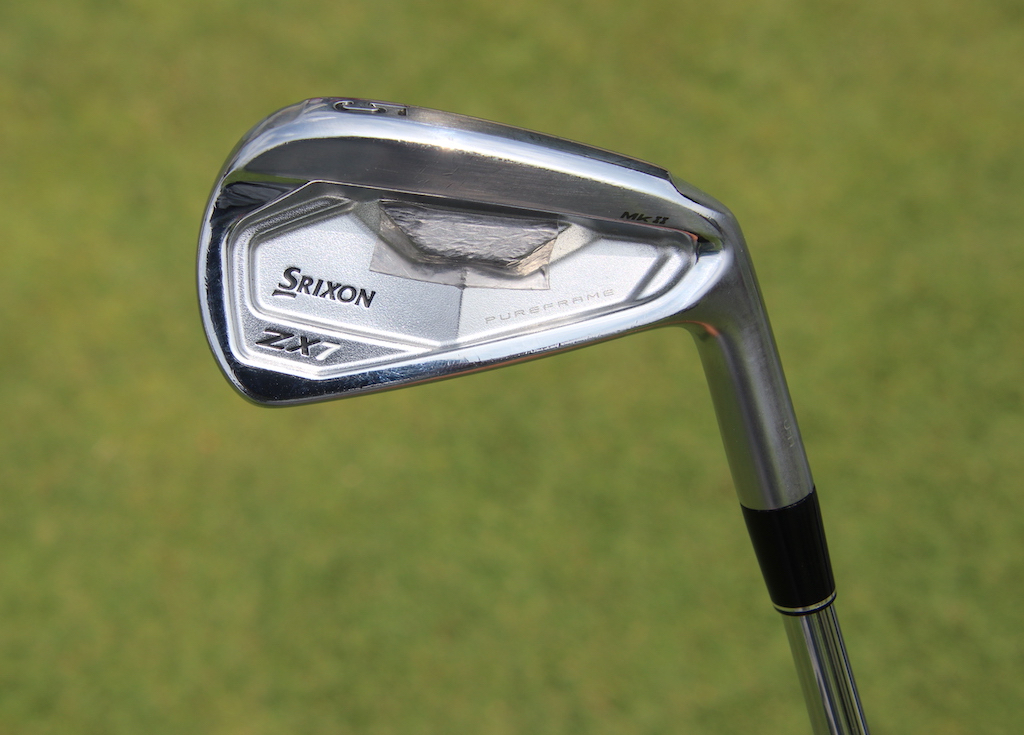
We also got a peek into Scott’s full WITB this week, which consists of a super-mixed set of Srixon irons, including a ZX Utility 3-iron, a ZX-5 MkII 4-iron, ZX-7 MkII mid-irons (5-7) and Z Forged II short irons (8-9).
See Scott’s full WITB from the CJ Cup here
An update on Daniel Berger’s Odyssey Jailbird
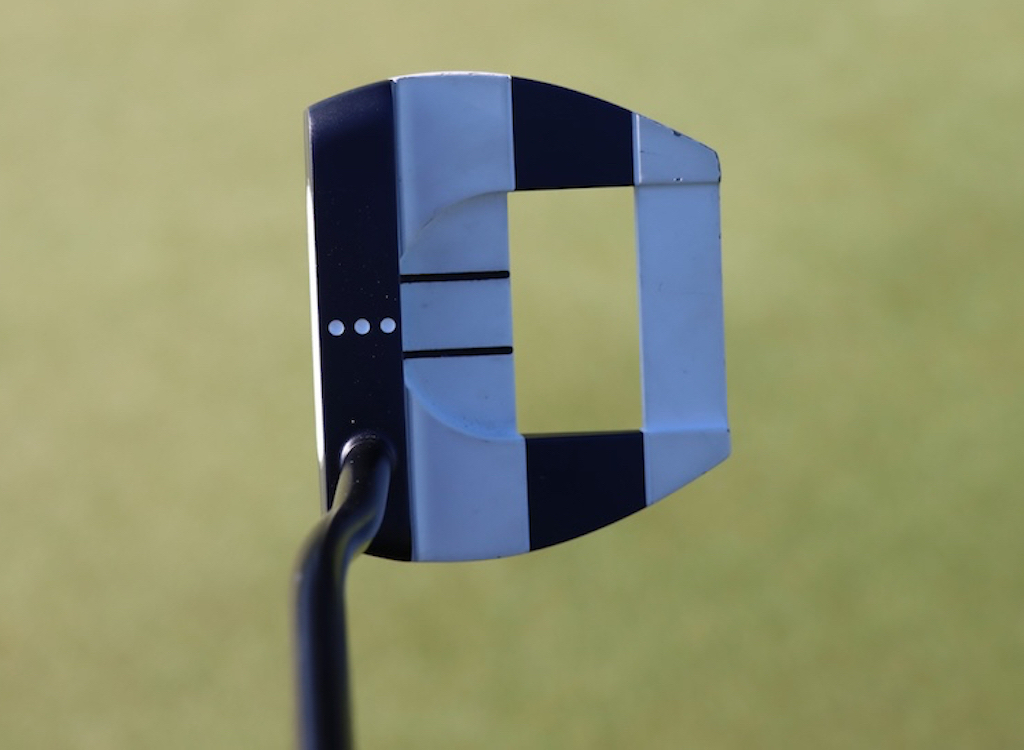
Last week in New Orleans, we highlighted Daniel Berger’s Ai-One Jailbird Mini putter because of its unique sightlines.
Well, we have an update.
According to Callaway Tour Manager Joe Toulon, who spoke with GolfWRX.com this week, Berger’s Jailbird Mini is actually from fellow Tour player Tom Kim’s stash. Kim is a prolific putter tester, and the exact putter Berger is currently using was actually originally made for and tested by Kim. The putter didn’t make it into Kim’s starting lineup, however, so he gave the putter back to Odyssey, and it eventually made it’s way onto Berger’s gamer roster.
Jordan Spieth’s new 7-iron
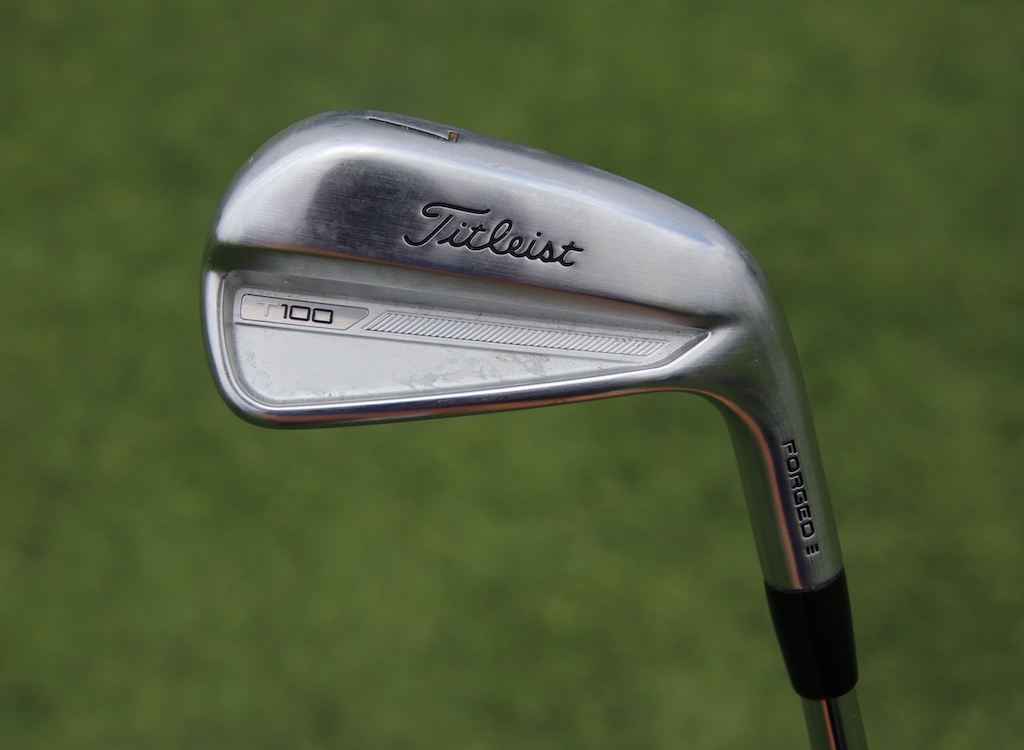
As the story goes, Jordan Spieth changed out his Titleist T100 7-iron on Wednesday before the 2024 Valero Texas Open, and then on Thursday, he used the 7-iron to make a hole-in-one from 199 yards on the 16th hole.
Good timing on that switch, Jordan.
On Tuesday at the 2024 CJ Cup Byron Nelson, GoflWRX.com caught up with Spieth to get the full story on why he switched just the 7-iron.
Our full story is over on PGATOUR.com’s Equipment Report, but here’s a snippet of what Spieth had to say:
“I hit my 7-iron a lot, especially on my own. The spin rates, relative to my 6-iron and my 8-iron, were lower, so it was going too far. I was trying to figure out why, if it was something in the makeup of the iron. I got the lies and the lofts checked, and everything was fine. So finally I was like, ‘Can I just get a new one and see if it fixes it?’
“Maybe there was one other time throughout my career where I changed just one iron, so it’s very unusual. I think it’s just because the grooves were worn down from hitting it too much.”
Ben Griffin signs with Maxfli to play the golf ball
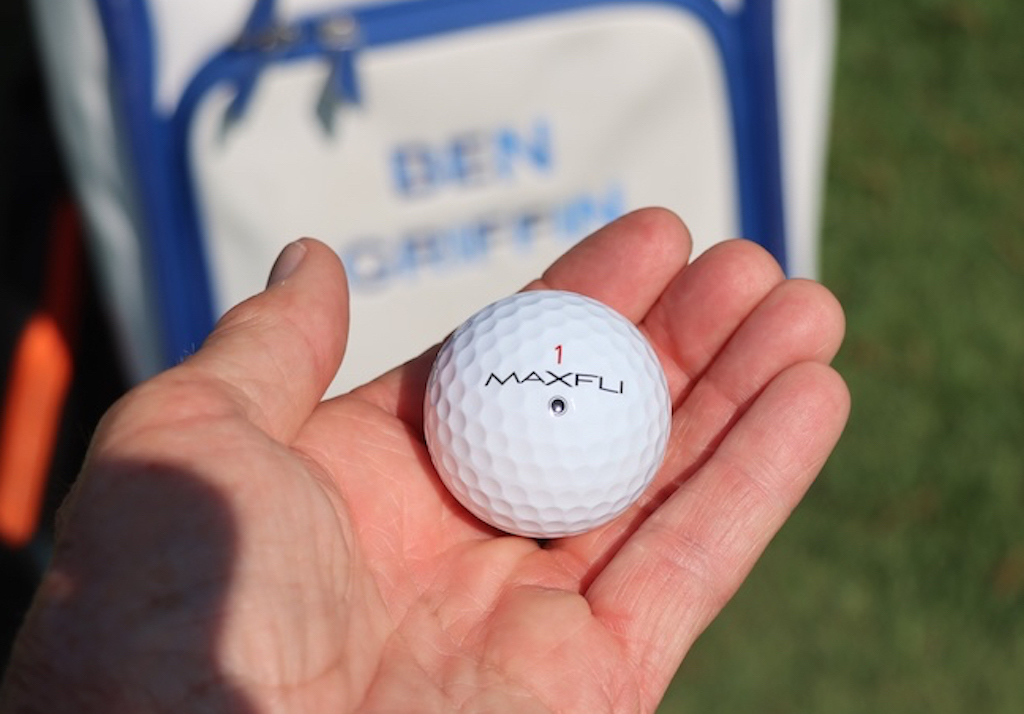
At the beginning of the year, LPGA Tour star Lexi Thompson signed a deal with Maxfli to play the company’s golf ball, and now, Griffin has officially joined team Maxfli, as well, thus expanding the company’s Tour presence.
GolfWRX.com caught up with Griffin on Wednesday in Texas for a video interview about his new golf ball of choice, and how he marks it…
View this post on Instagram
A 16-year-old is playing on the PGA Tour this week, using a 2-iron!
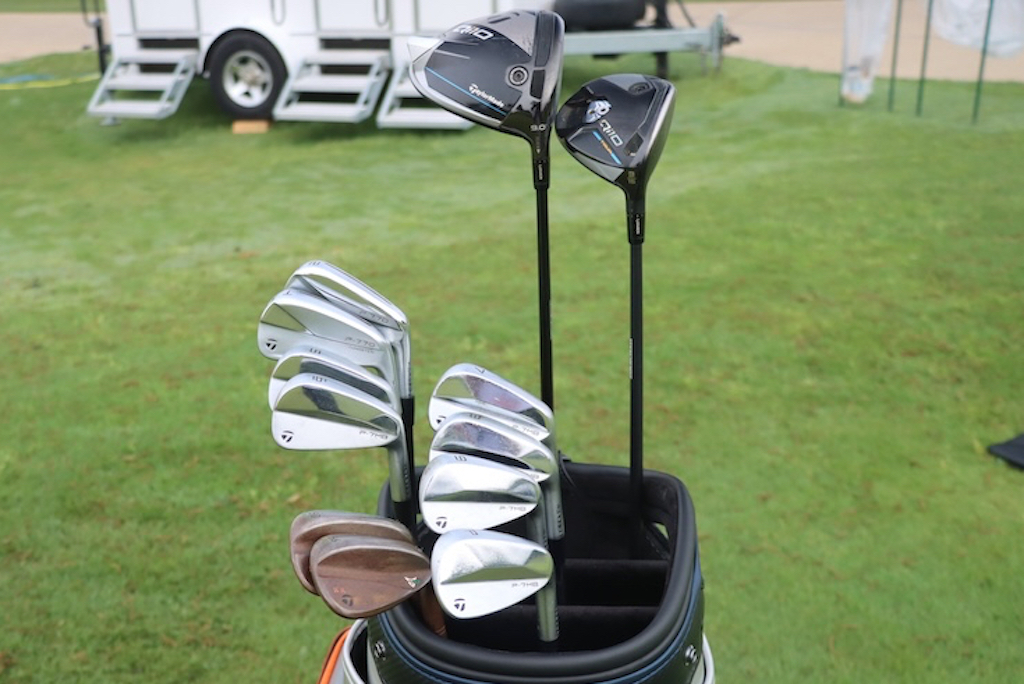
Amateur golfer Kris Kim, at just 16 years of age, is making his PGA Tour debut this week after receiving a sponsors exemption into the event. In 2023, Kim won both the R&A Boys’ Amateur Championship and the European Boys’ International Championship.
On Tuesday in Texas, we got a look into Kim’s bag, which revealed that he’s currently playing a TaylorMade P-770 2-iron, and a bag full of TaylorMade clubs.
Check out Kim’s full WITB here
A smart golf ball stamping
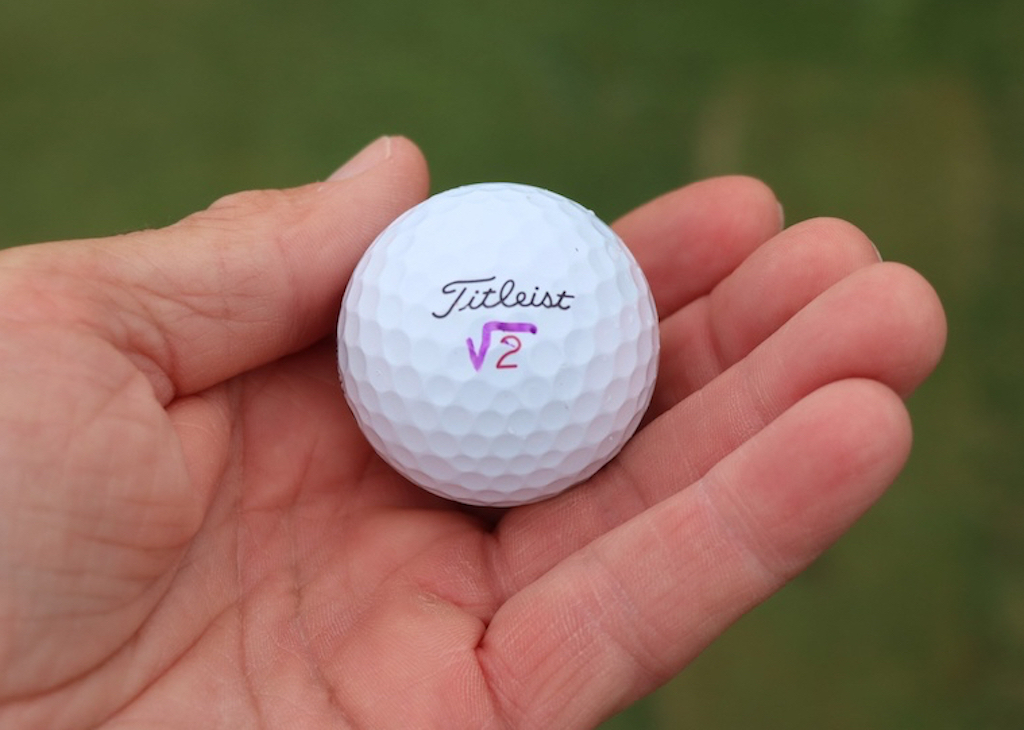
I’m not going to sit here and pretend to be a big math guy, because I’m not. However, I do recognize David Nyfjall’s purple ball marking as a square root symbol.
While I don’t know the particular significance of the square root symbol for Nyfjall, I do know you have to be fairly intelligent to even consider using a marking like that. Pretty cool stuff from the Northwestern alum, and 2023 Byron Nelson Award winner.
And, with that, we say goodbye to Texas and TPC Craig Ranch. We’ll see you next week at the Wells Fargo Championship in Charlotte for more insider equipment news and storylines.
For now, don’t forget to check out all of our photos from the 2024 CJ Cup Byron Nelson
- LIKE2
- LEGIT0
- WOW0
- LOL0
- IDHT0
- FLOP0
- OB0
- SHANK0
Whats in the Bag
Wesley Bryan WITB 2024 (May)
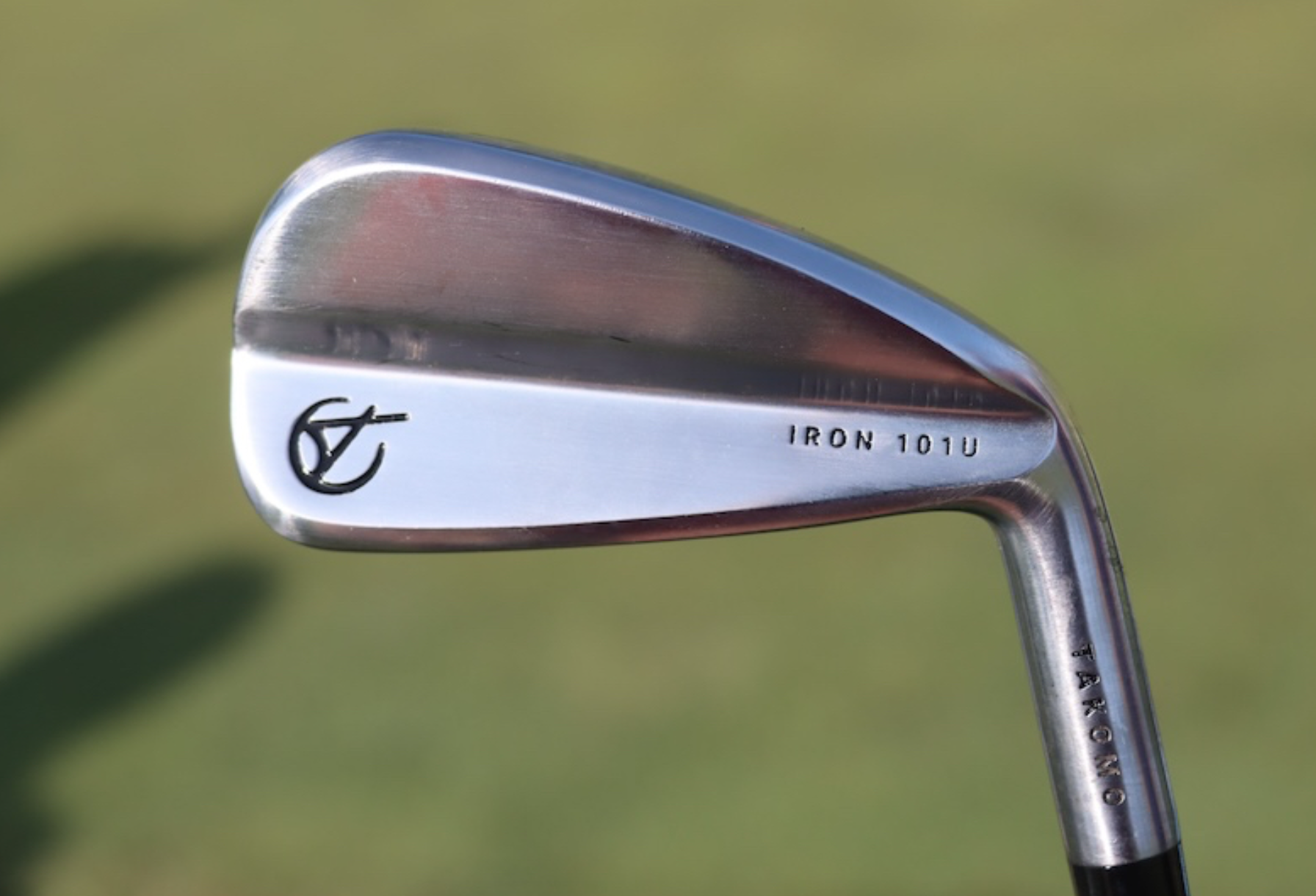
- Wesley Bryan what’s in the bag accurate as of the CJ Cup Byron Nelson.
Driver: Callaway Paradym Ai Smoke Triple Diamond Max (9 degrees @10)
Shaft: Mitsubishi Diamana GT 50 TX
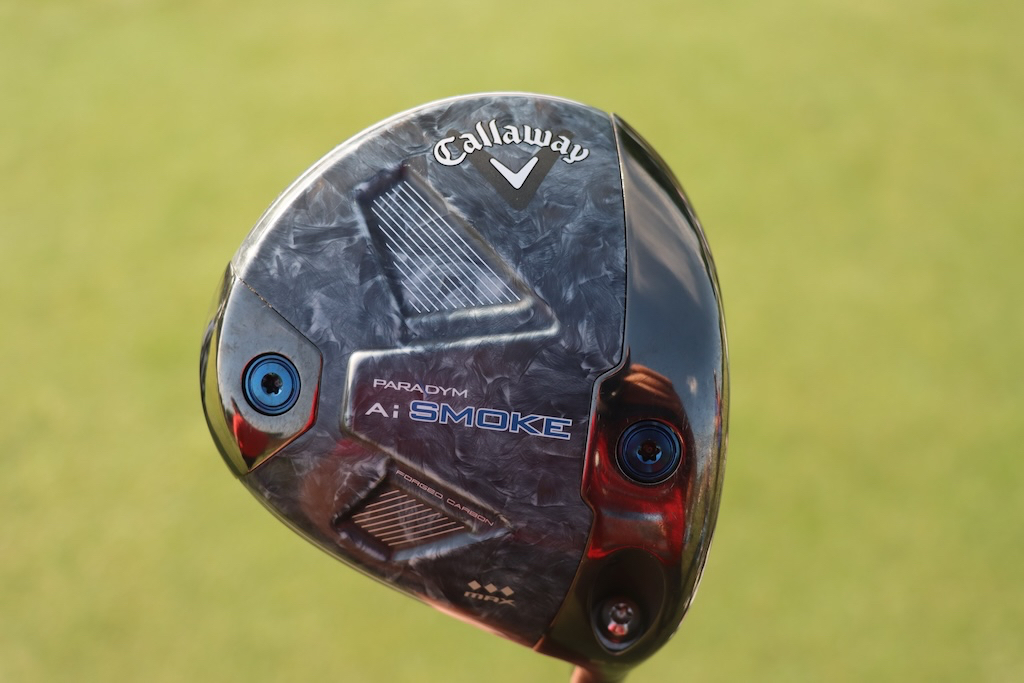
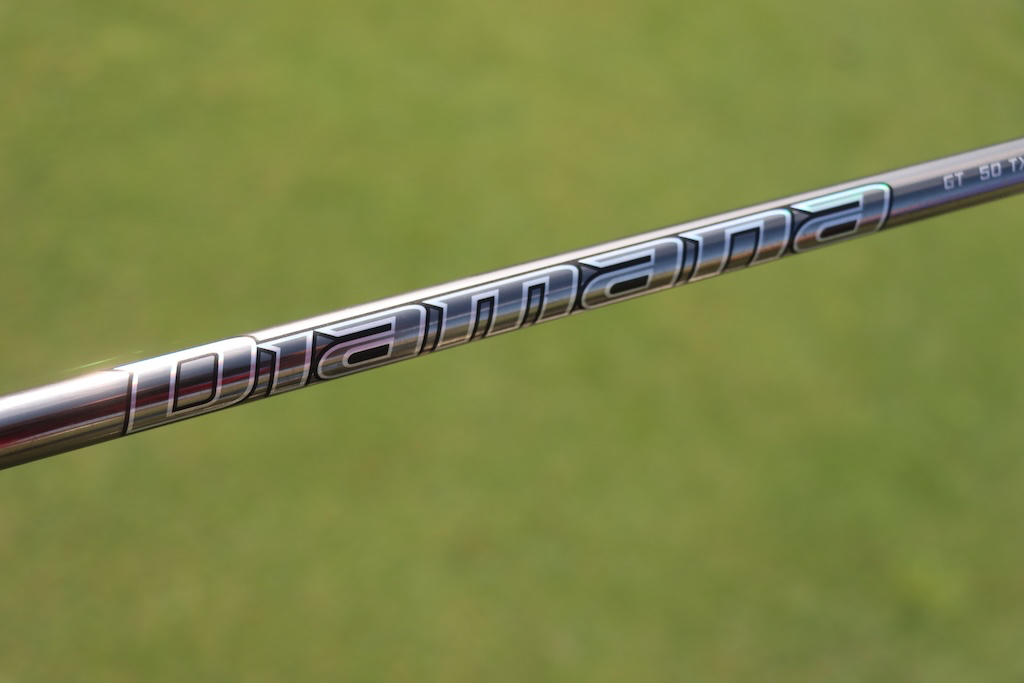
3-wood: TaylorMade Stealth Plus (15 degrees)
Shaft: Mitsubishi Diamana GT 60 X
Hybrid: TaylorMade Stealth 2 Plus Rescue (19.5 degrees)
Shaft: Fujikura Ventus HB Blue 8 X
Irons: Titleist T200 (4), Takomo 101U (4), Takomo 101T (5), Takomo 301 CB (6-9)
Shafts: True Temper Dynamic Gold Tour Issue X100
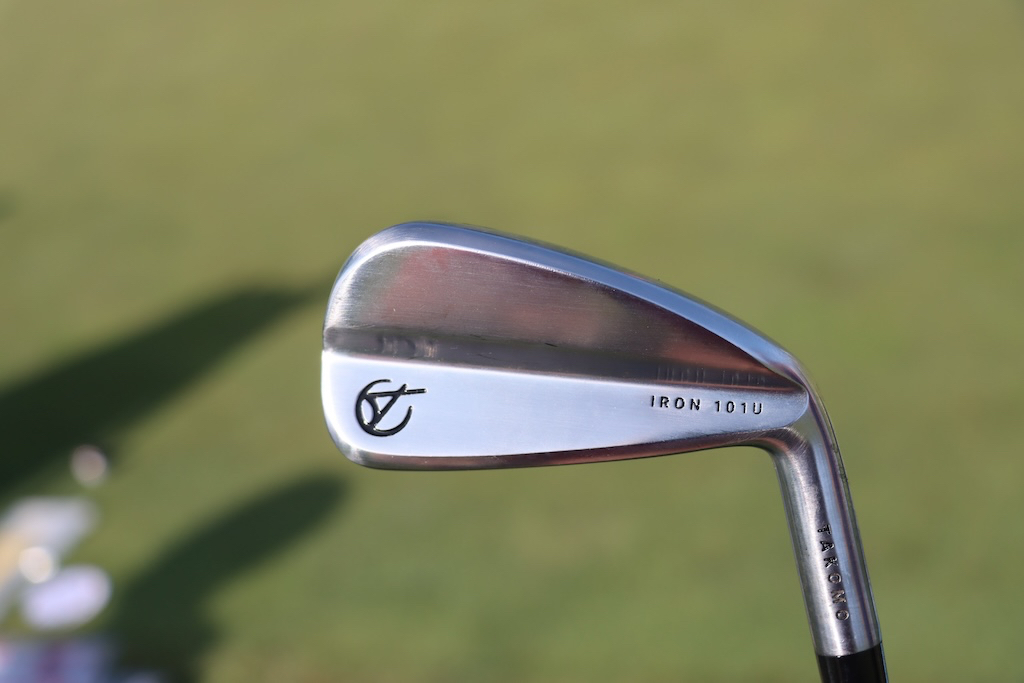
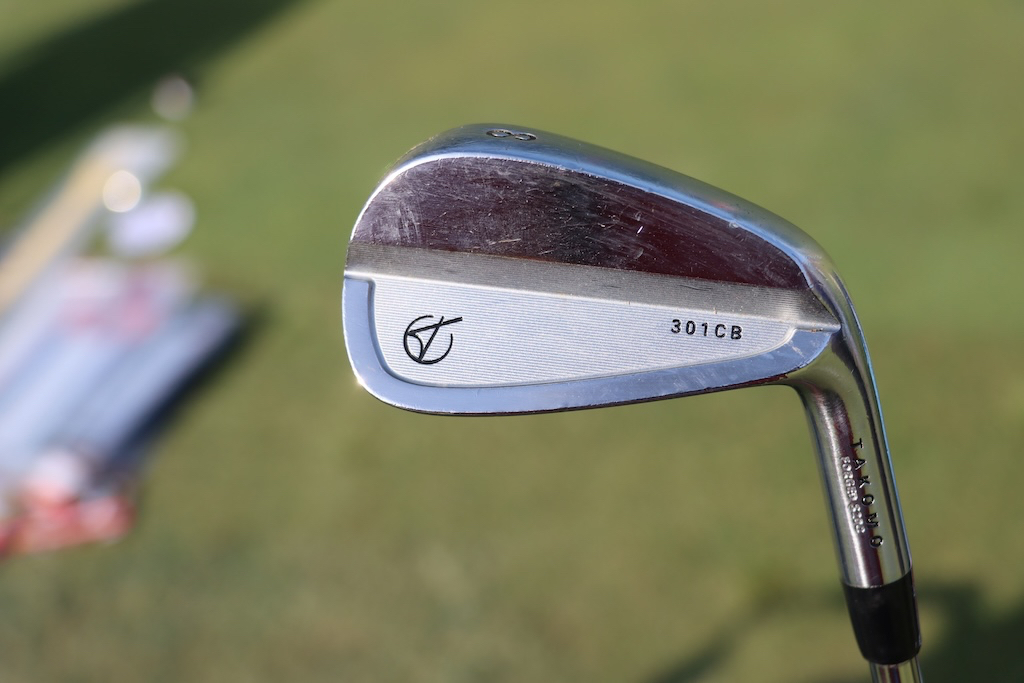
Wedges: Titleist Vokey Design SM10 (46-10F, 52-08F, 56-14F), Titleist Vokey Design WedgeWorks Proto (58-A)
Shafts: True Temper Dynamic Gold Tour Issue S400
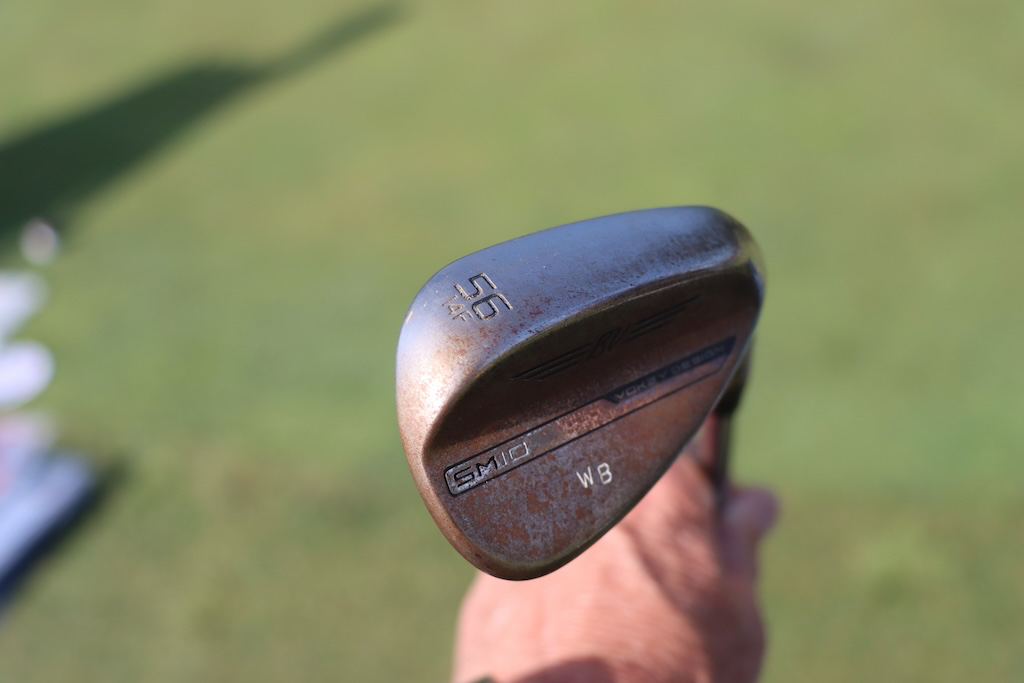
Putter: L.A.B. Golf DF3
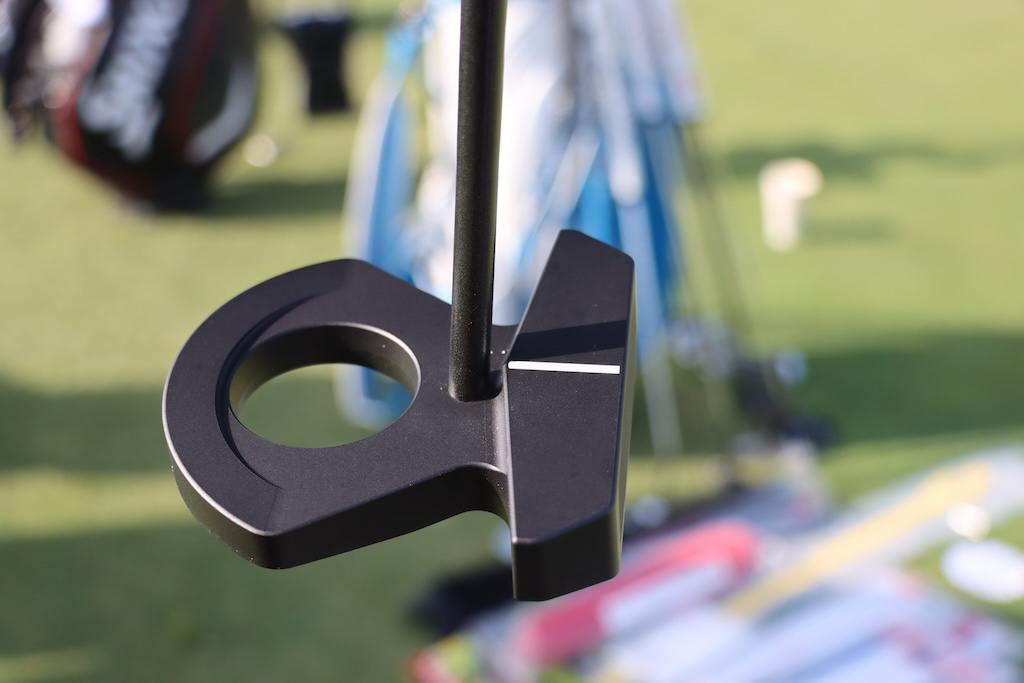
Grips: SuperStroke, Golf Pride Tour Velvet
Ball: Titleist Pro V1x
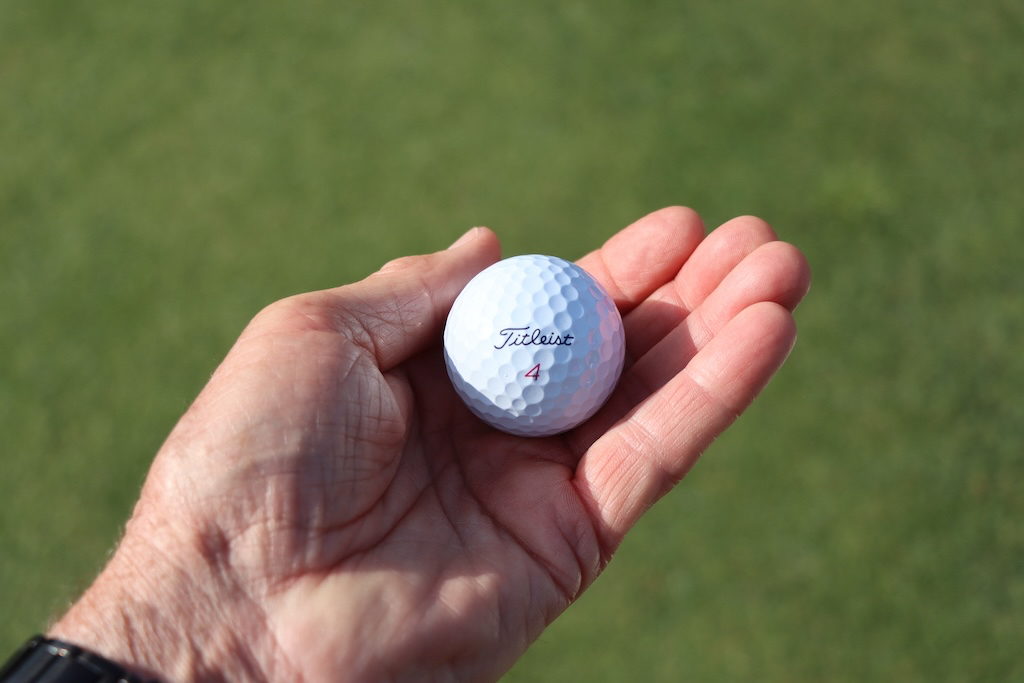
More photos of Wesley Bryan’s WITB in the forums.
- LIKE3
- LEGIT1
- WOW1
- LOL1
- IDHT0
- FLOP0
- OB0
- SHANK0
-

 19th Hole2 weeks ago
19th Hole2 weeks agoJustin Thomas on the equipment choice of Scottie Scheffler that he thinks is ‘weird’
-

 19th Hole2 weeks ago
19th Hole2 weeks ago‘Absolutely crazy’ – Major champ lays into Patrick Cantlay over his decision on final hole of RBC Heritage
-

 19th Hole3 weeks ago
19th Hole3 weeks agoTwo star names reportedly blanked Jon Rahm all week at the Masters
-

 19th Hole2 weeks ago
19th Hole2 weeks agoReport: LIV Golf identifies latest star name they hope to sign to breakaway tour
-

 19th Hole3 weeks ago
19th Hole3 weeks agoNeal Shipley presser ends in awkward fashion after reporter claims Tiger handed him note on 8th fairway
-

 19th Hole2 weeks ago
19th Hole2 weeks agoBrandel Chamblee has ‘no doubt’ who started the McIlroy/LIV rumor and why
-

 Equipment3 weeks ago
Equipment3 weeks agoWhat we know about Bryson DeChambeau’s 3D-printed Avoda irons
-

 19th Hole7 days ago
19th Hole7 days agoLET pro gives detailed financial breakdown of first week on tour…and the net result may shock you





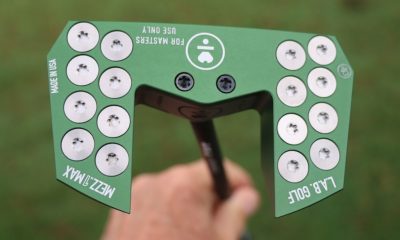





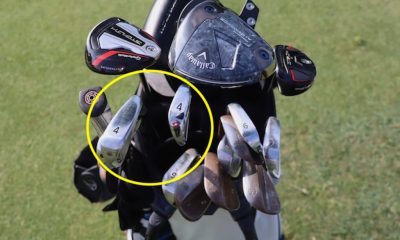

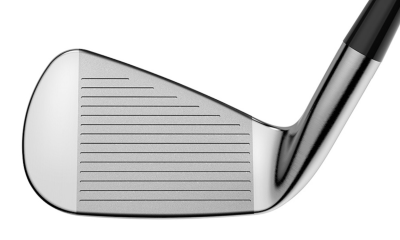












Chris Elliott
May 17, 2021 at 7:00 pm
As my father told me I don’t care what you use as long as A. 8t works for you B. You kick butt.
I believe Phil commented that Tiger was using inferior clubs Nike and he still kicked everybody’s butt. So gentlemen if it works for me and I take your money you can say what every you want.
Neil Armstong
Jan 21, 2020 at 12:10 am
They look just like my ’18 AP3’s with a face lift! Lol! Just flat out comical with all these multiple 100’s, S’s, Double S’s, and who know’s what’s coming down the pipe! T minus 300 and counting…Houston we have an over production problem!
dat
Jan 20, 2020 at 10:32 pm
Nice lofts, lol.
jgpl001
Jan 20, 2020 at 9:29 pm
As a Titleist diehard for many years its sad to see them go down this route and offer this nonsense, the T300 is bad enough, but this….
Sure, I don’t have to buy them and I won’t, but the golf world is full of this rubbish now
Every time I open the WRX page there is some new hollow, nasty cast or false welded-forged face iron, etc., with a 7iron at 25 degrees
Oh God, please make it stop
Shallowbutdeadly
Jan 20, 2020 at 5:07 pm
Dumbest iron set yet, someone should be fired. Titleist thinks the golfer is stupid.
Tenbuck
Jan 20, 2020 at 12:09 pm
This gives new meaning to the phrase “bagging a bunch of wedges”.
Rich Douglas
Jan 20, 2020 at 12:06 pm
Distance is way over-rated in irons. Gapping is a key. Forgiveness is even more important. But distance? That can be achieved by lengthening shafts and jacking lofts. But that is really just changing the number on the iron and fooling yourself.
If a 6-iron is 1/2″ longer and has a lower loft, it’s a 5-iron. I don’t care what the number on the club says.
Jordan
Jan 20, 2020 at 11:27 am
These are great. Really been looking for a 5 driving iron for a while. Couldn’t find one to save my life.
Shallowface
Jan 20, 2020 at 10:26 am
CP beat me to it, but since the psychological aspect has been “proven” to be so important, and since “everyone” can hit a wedge, just call the entire set wedges. The 20 degree club is the A wedge, the 23 the B wedge and so on. That makes the 43 the G (Gap) wedge. Just perfect. Put the Vokey name on the set for the finishing touch.
The manufacturers think the customers are ignorant at best and stupid at worst. Why would you give your money to someone who would insult you to that degree?
joe
Jan 20, 2020 at 10:04 am
If they lofts are going to be SOOO out of sync with the iron-number, maybe we should move to icons instead of “P, 9, 8, 7…” Maybe a tree, a house, a fish, a bear.
…It’s on par with called RocketBladez, “blades”.
CP
Jan 20, 2020 at 10:01 am
Is the end result a set of a 20* pw then 8 gap wedges?
Moses
Jan 20, 2020 at 9:42 am
Oh come now 38* PW? And then 43* Gap Wedge?
Lofts are so jacked up that they have 3 degree gaps from 5-6-7. 20 degree 5 iron oh my. That’s a 3 iron in my book.
Shallowface
Jan 20, 2020 at 10:34 am
When I look down at a 5 iron and see a 2, that doesn’t inspire confidence.
A moderate speed player is going to struggle to hit any 20 degree club that isn’t a wood, regardless of design.
Really going to be interested to see The Golfworks measurements of these clubheads that will show just how low the COG and just how high the MOI really is.
goodman52
Jan 20, 2020 at 12:08 pm
hi did you ever heard something about dynamic loft with this whippy ultralight Shafts?
Shallowface
Jan 20, 2020 at 4:39 pm
Hi back at you. Sure have, and it won’t be enough to make a difference. I’ve never seen a bad design overcome by a shaft, and any anecdotal evidence you might present to the contrary was a temporary placebo effect that didn’t last. That’s reality, which I know has little or no place on a golf equipment website. Thanks for playing!